Which marketing channel should you use?
You don’t want to get this wrong.
A good marketing channel will work with you to grow your business. A bad one can work against you.
And time is of the essence.
When your marketing budget is close to zero, you can’t afford to waste what little time you have on a dead-end marketing channel.
So, which marketing channel should you choose and which ones are most suited to you and your business.
Read on to learn more about five free digital marketing channels worth exploring in 2023.



What are Marketing Channels?
Marketing channels are platforms, tools, and strategies that businesses use to communicate with their target market in an effort to sell their products or services.
For example, you might use Facebook advertising to promote your new line of women’s clothing. Or you might hand out flyers to promote your next pop-up store.
→ Click Here to Launch Your Online Business with Shopify
There are countless types of marketing channels in 2023.
However, in this article, we’re going to focus solely on five free digital marketing channels.
Why Focus on Digital Marketing Channels?
Before digital marketing channels became widely available, businesses would usually have to spend money on advertising, promotions, and sponsorships.
In other words, you needed money to make money. Today things are different.
Free digital marketing channels can be harnessed by anyone with a computer, an internet connection, and a passion to succeed.
Take social media.
Never before could the average Joe communicate with the world’s population. Using social media marketing channels, anyone can grow a following and build a business with just a few bucks.
What’s more, digital marketing channels are easy to scale.
Regardless of whether it reaches 10 people or 10,000 people, it still only takes a few minutes to create a social media post.
So which free digital marketing channels are available in 2021?
A Complete List of Free Digital Marketing Channels in 2023
Before we explore five free digital marketing channels in depth, here’s a complete list of free digital marketing channels in 2023, along with links to learn more about each of them.
Owned Digital Marketing Channels
Social Media Marketing Channels
Organic Search Engine Marketing Channels
Other Digital Marketing Channels
5 Free Digital Marketing Channels You Should Prioritize in 2023
Here is a rundown of five types of marketing channels in 2021 that you can use to grow your business – for free.
First up?
1. Social Media Marketing
Social media is the perfect digital sales channel for scrappy entrepreneurs looking to start a business.
It’s free, it’s powerful, and when done right, can effectively drive sales.
A massive 45 percent of the world's population uses social media daily and the opportunity available is incredible.
For example, Instagram has grown to more than two billion monthly active users.
Plus, more than half of Instagram’s users visit the platform at least once per day and 70 percent of Instagram users actually want to consume content from brands.
So how can you succeed with social media marketing?
Social Media Marketing Tips
1. Choose the Best Social Media Platform for Your Brand
There are tons of social media platforms in 2023, but not all are created equal.
Some social media platforms are more suited to people with certain demographic or psychographic characteristics.
For example, Instagram tends to be better for Millennials, Snapchat is great for marketing to Generation Z, and LinkedIn is usually better for business-to-business marketing.
In fact, 92 percent of B2B marketers prefer to use LinkedIn over all other platforms.
So do some research to ensure that you choose the best social media platform to connect with your target audience.
2. Prioritize Relationships over Sales
It might sound counter-productive, but the way to sell more is to focus on relationships, not the sales themselves.
This is because, at its core, social media marketing is relationship marketing. The time for the hard-sell is further down the sales funnel.
Social media marketing is all about the long-term.
The idea is to develop a genuine connection with your target audience over time. This way, you’ll build a following of loyal customers and advocates who regularly purchase your products and promote your brand.
Do it right and it will pay off handsomely – for example, repeat customers spend 67 percent more than new customers.
3. Be Consistent
Relationships take time, so consistency is vital.
You have to show up and develop an intimate, authentic brand presence that your followers enjoy interacting with on a regular basis.
This is why companies that thrive on customer relationships post around two or three posts per day .
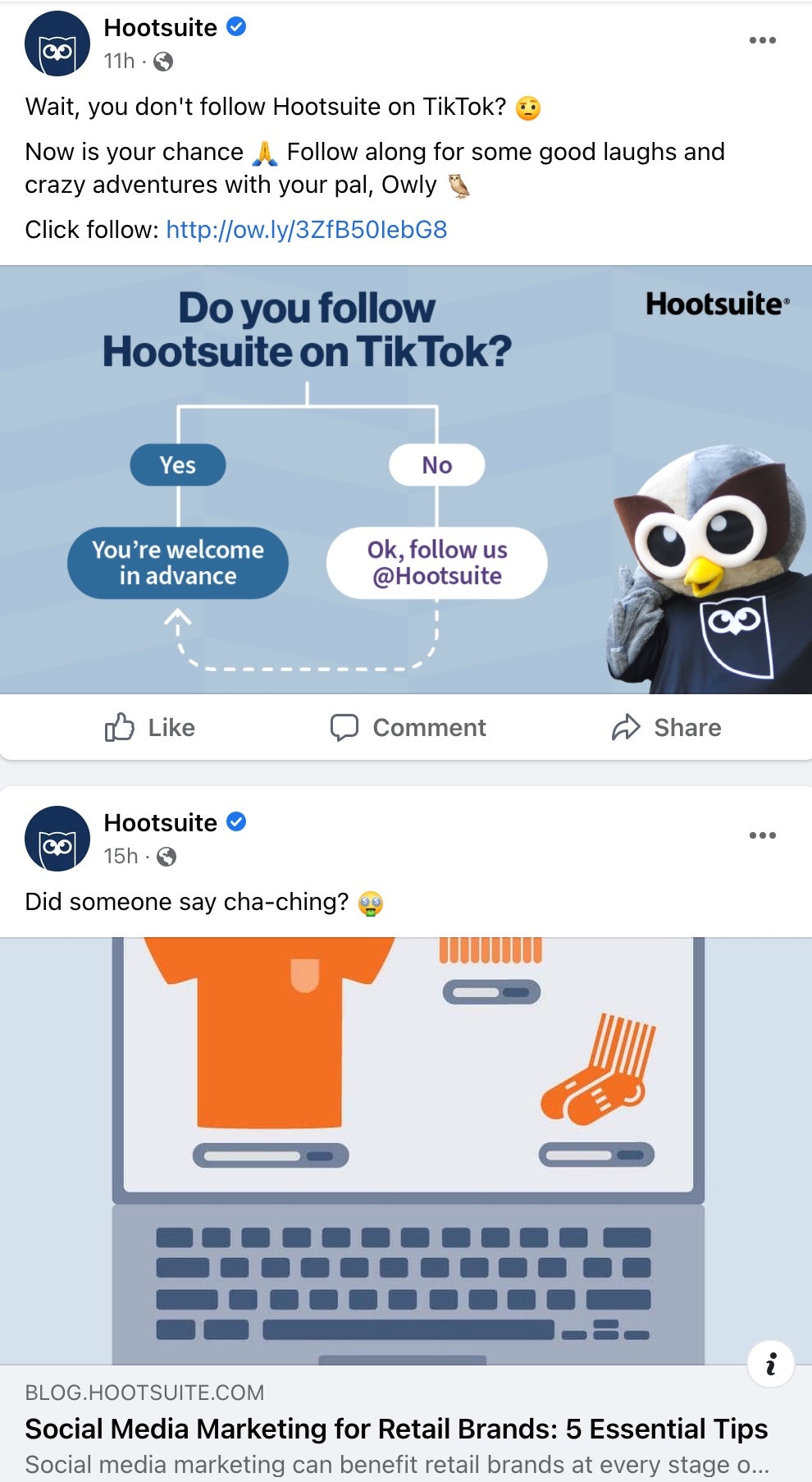
Plus, this is another reason to choose just a handful of social media platforms to focus on.
If you try to use them all, it’s likely that you’ll spread yourself too thin and find it difficult to maintain an effective social media schedule.
2. Influencer Marketing
There are many social media influencers that will partner with you to promote your products or services to their loyal and engaged followers.
It’s an effective way to get your products in front of your target market.
But why does it work so well?
Influencer marketing harnesses a powerful social phenomenon called “social proof.” This refers to the fact that people are heavily influenced by others’ opinions, actions, and recommendations.
Other commonly used forms of social proof are product reviews, testimonials, and case studies.
There are six key types of influencer marketing campaigns:
- Sponsored content
- Product and content collaborations
- Reviews
- Competitions and giveaways
- “Takeovers” on your platforms
- Long-term ambassadors
Many larger influencers will expect you to pay them a fee in exchange for promotion.
However, plenty of smaller influencers will happily promote your products if you offer them freebies or promote their account in return.
So what should you bear in mind when using this marketing channel?
Influencer Marketing Tips
1. Make Sure you do Your Research
The whole point of influencer marketing is to expose your products to your target audience through someone they trust who will… well, influence them to buy from you.
Success depends on two things.
First, are their followers your exact target market? In other words, there’s no point partnering with a beauty influencer to sell mountain bike gear.
Secondly, how engaged are their followers? Sure, they might have 100,000 followers, but how many likes and comments do they get? You want diehard fans, not vaguely interested people.
2. Stick to Micro-Influencers
Micro-influencers typically have between 5,000 and 50,000 followers.
Compared to the big-hitters, micro-influencers are easier to connect with, are less likely to demand large fees, and are actually more effective than big-name celebrities.
In fact, Collective Bias found that only three percent of shoppers are influenced by celebrity endorsements, while a massive 30 percent of consumers are likely to buy a product recommended by a non-celebrity blogger.
This is because they tend to have stronger relationships with their followers.
3. Get Proactive and Reach Out
“Start with a direct Instagram message,” says Zach Benson, Founder of Assistagram.
“Just let them know that you’re interested in working together. Keep your DM short, clear, and conversational. Include the relevant accounts, a direct request, and your trade.”
Here’s one of the messages Benson has used in the past:
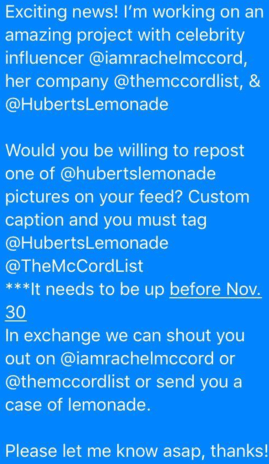
4. Develop Long-term Relationships
Long-term influencer partnerships can be incredibly powerful. Most brands call these influencers ambassadors.
Gymshark has a page on its website dedicated to promoting their ambassadors.
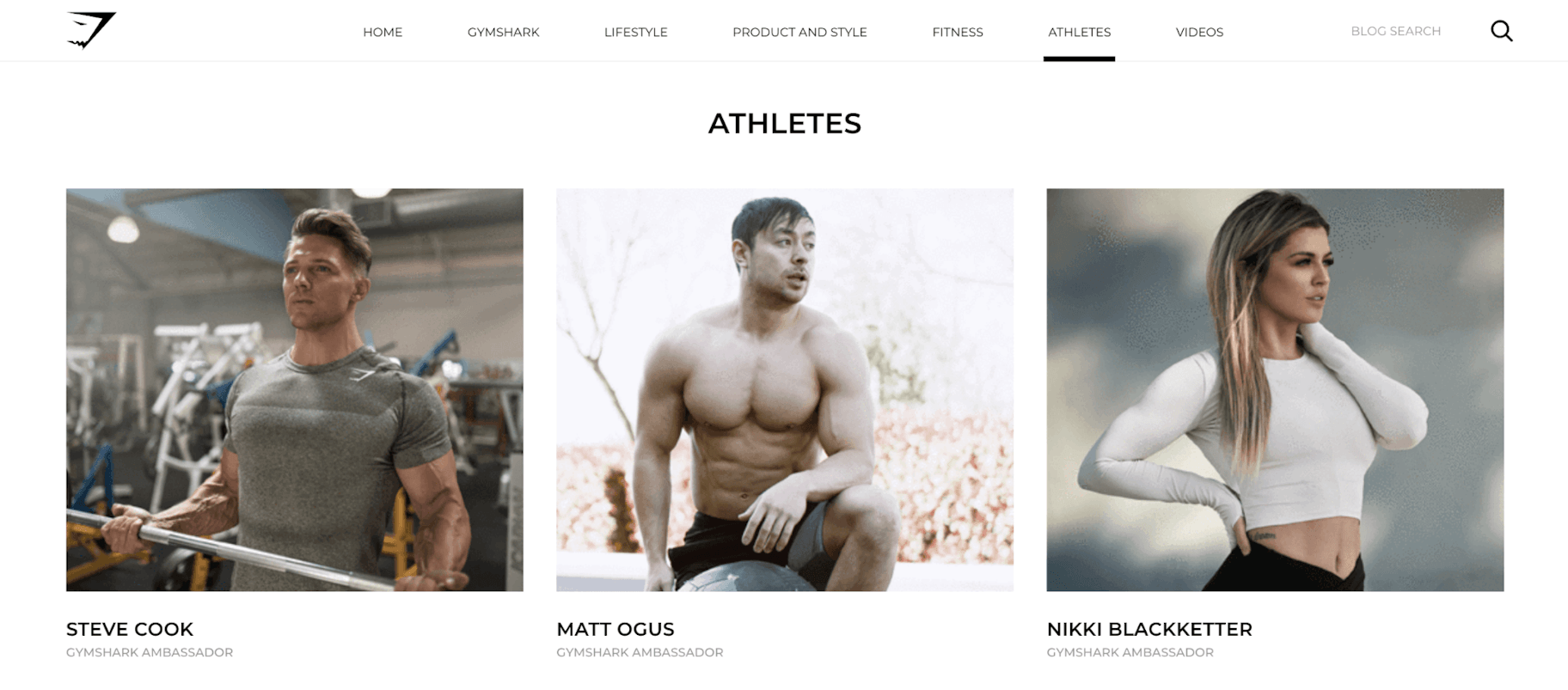
Ambassador relationships increase social proof and deepen market penetration. In other words, if you work with an influencer over a longer period, a larger proportion of their following is likely to become customers.
3. Content Marketing
Content marketing is the process of creating, publishing, and distributing content to attract and engage your target audience.
(This article you’re reading is content marketing!)
Plus, there are tons of different types of content that you can create for free, such as:
- Videos
- Blog posts
- Images
- GIFs
- Infographics
- Case studies
- Ebooks
- White papers
- Podcasts
Content marketing can be incredibly effective.
One study found that it can cost 62 percent less than traditional marketing and generate three times as many leads.
Content marketing is also a large part of social media marketing and search engine optimization (SEO).
So, how can you get started with content marketing?
Content Marketing Tips
1. Focus on Value
The content you create must be interesting and engaging.
Think about content that entertains your target audience or teaches them something new that they care about.
For example, hair extension brand Luxy Hair often creates video tutorials for their audience.
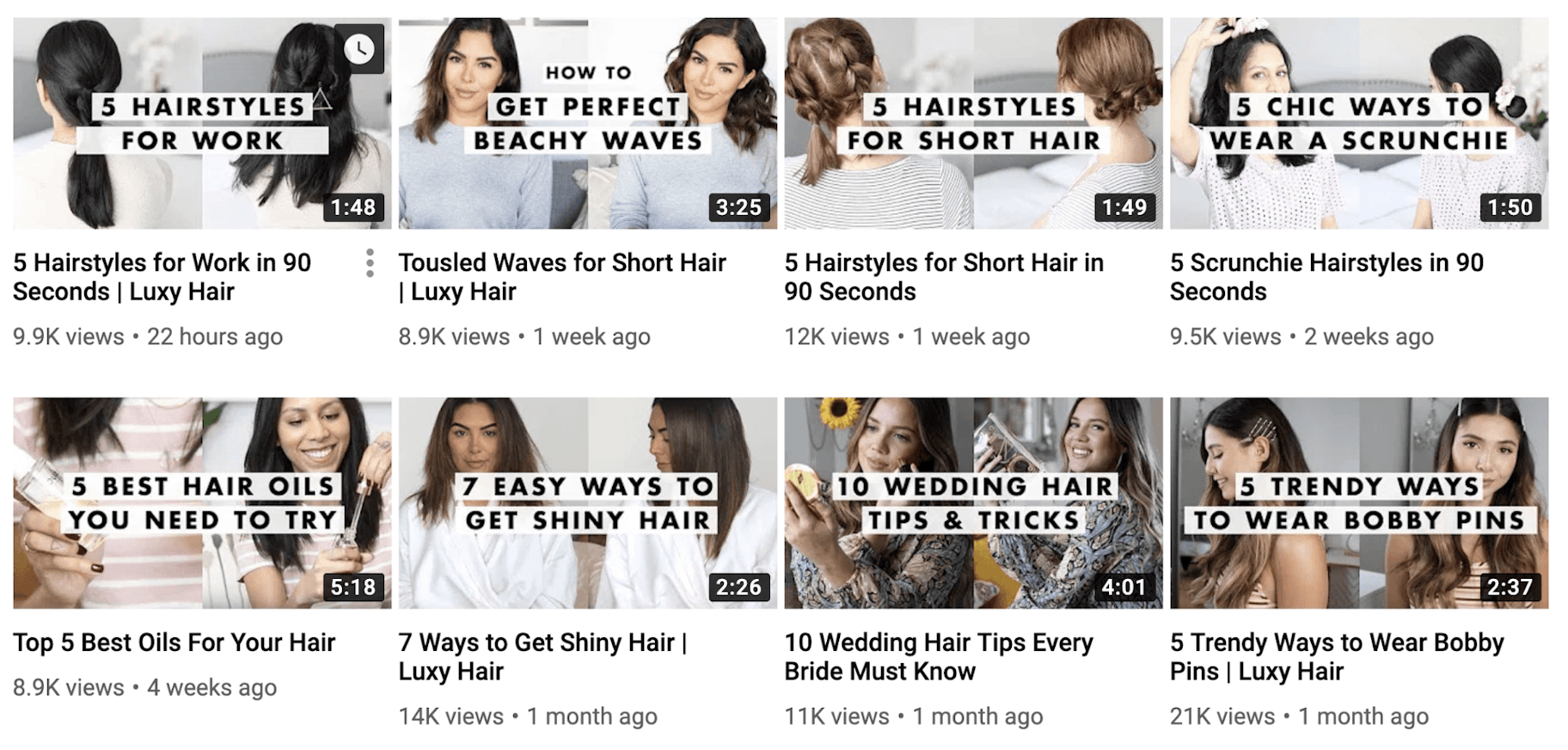
With more than 3.2 million YouTube subscribers and over 465 million views, it seems to be working!
2. Repurpose Content for Different Channels
Creating great content takes time.
Thankfully, you don’t always need to create content from scratch. Instead, you can repurpose every long piece of content into many other pieces of content.
This is a great way to get more out of each piece of content you create.
For example, say you write a long-form blog post for your website, you could repurpose it into:
- Long-form video for YouTube
- Video snippets for Instagram, Facebook, Snapchat, and Twitter
- Shorter social media posts for Facebook
Each of Luxy Hair’s video tutorials is also turned into a blog post for their website.
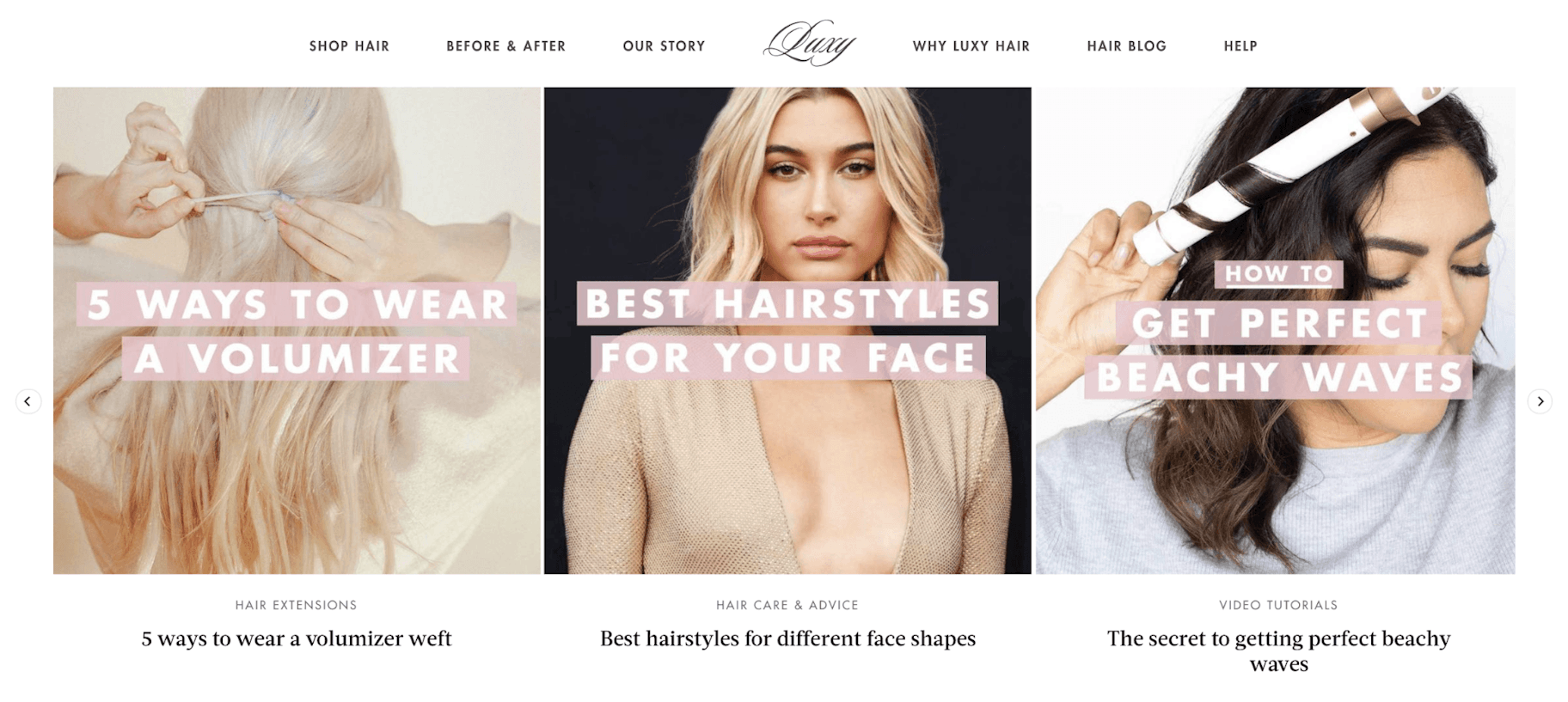
3. Invest in the Long-Term
It can take time to gain traction with content marketing.
Just like with social media marketing, to succeed, you must consistently create and publish quality content.
4. Search Engine Optimization
Search engine optimization (SEO) is the process of trying to rank high in the search engine results pages (SERPs). The idea is to expose your website or content to people interested in your niche.
Like any effective marketing strategy, SEO takes time and effort.
However, when you consider that Google receives more than 74,000 searches per second, it’s well worth the effort!
For example, when you search “dropshipping” on Google, Shopify pops up as the first result – they’ve also claimed Google’s featurd snippet.
Plus, in the image below, you can see that an average of 450,000 people are searching this term each month – that’s a lot of free exposure and traffic!
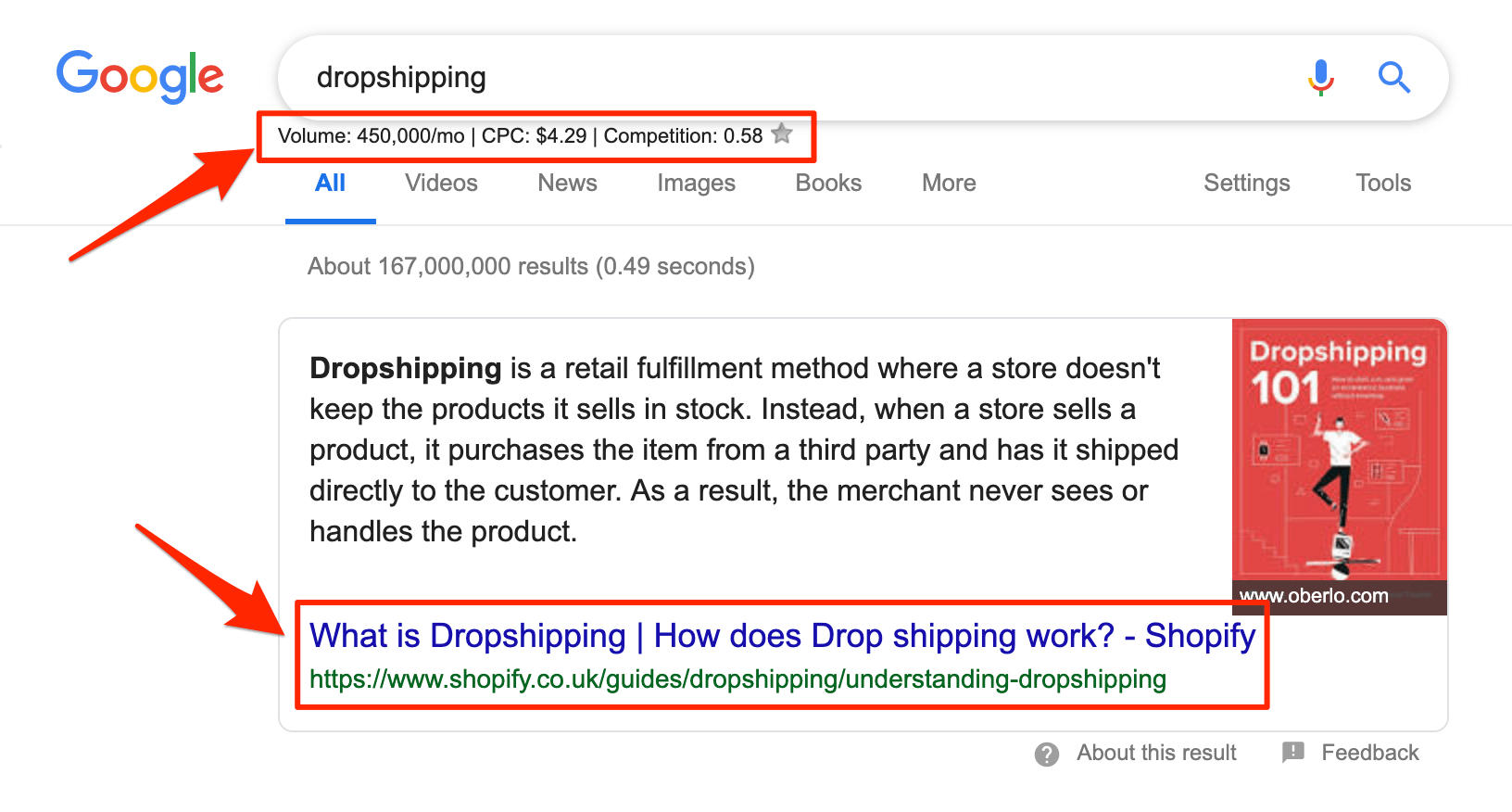
Although there are plenty of alternative search engines, Google rules the roost with 78.23 percent of the worldwide search engine market share.
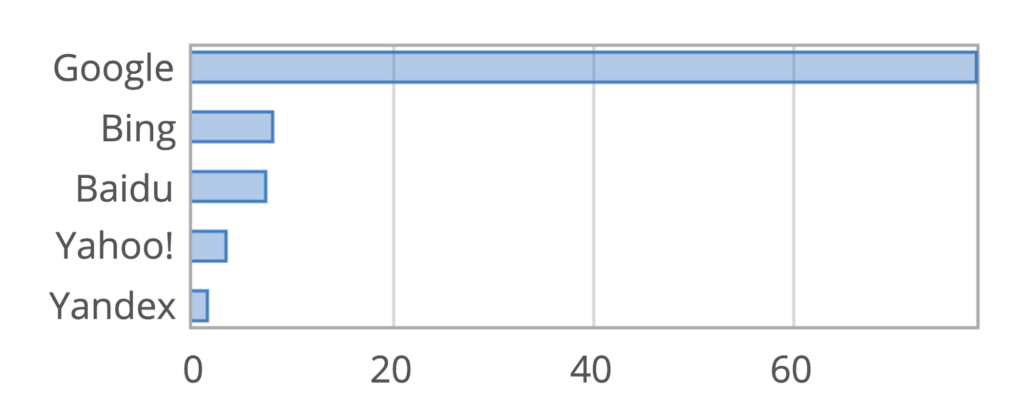
So how can you get started with SEO?
Search Engine Optimization Tips
1. Research Effective Keywords
There are many different aspects to a successful SEO strategy. However, a good place to start is with keywords.
Keywords are the way in which Google indexes your website and content, and how searchers find it. In the example above, the Shopify webpage has been optimized for the keyword “dropshipping.”
You can use tools like Chrome extension Keywords Everywhere to find keywords with a substantial flow of traffic.
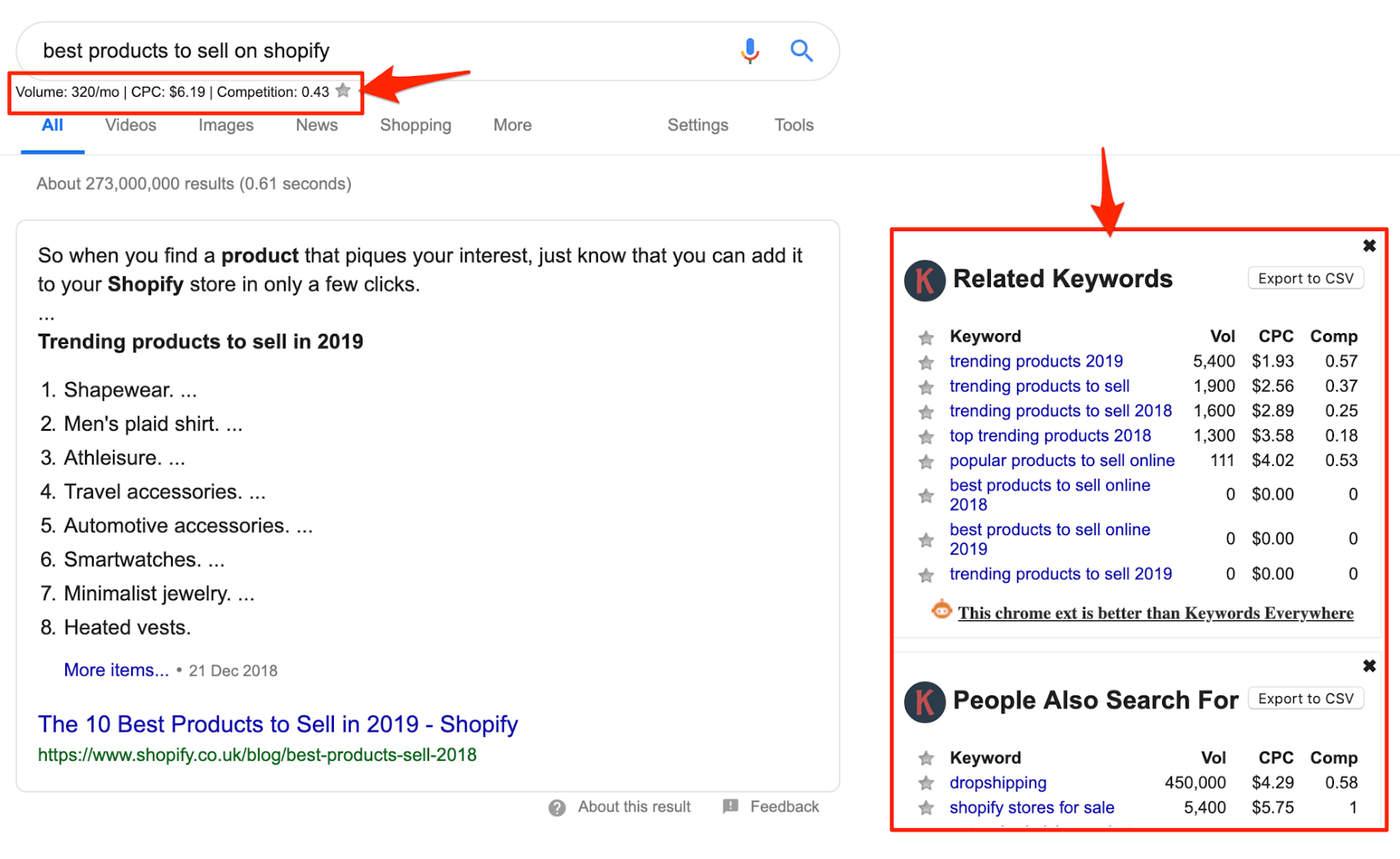
You can also use content research tools like Buzzsumo to find topics that are popular with your target audience.
2. Optimize Your Website and Content for these Keywords
Once you have a set of keywords that your target audience is searching for, you need to create content and web pages around them.
For blog content, you can use an online tool like SEO Review Tools, Yoast, or SEMrush to help.
Shopify makes it easy to optimize your webpages for SEO – check out this guide on how to add keywords to your website.
3. Continually Refresh and Update Old Content
Google prioritizes up-to-date content.
This makes sense – up-to-date content is likely to be more relevant to searchers.
So, as your content ages, it helps to go back and update it. Just remove the outdated parts, add any new relevant information, and optimize the keywords.
Although you can’t update parts of a podcast or YouTube video, you can revisit popular topics in new content to ensure that you always have relevant content available.
5. Email Marketing
Email marketing is one of the oldest forms of internet marketing. And although it might not be as cool as it once was, it still has a huge return on investment.
One of the best things about this marketing channel is that you’re in control. This means that it’s unaffected by third-party developments, such as social media algorithms.
Plus, you don’t need to invest a huge sum to create a winning campaign, making email one of the best low budget marketing tactics you could use for your business.
There are tons of different types of email marketing campaigns you can use to grow your business, including:
- Send a follow-up email to consumers who abandon their shopping carts
- Nurture new subscribers with a welcome sequence
- Promote new products
- Share discounts, offers, and giveaways
- Follow-up with new customers to land repeat sales
- Ask for reviews and gather feedback
- Re-engage inactive subscribers to land repeat sales
So how can you get started with email marketing?
Email Marketing Tips
1. Create a Compelling Lead Magnet
Think of a lead magnet like bait.
This is often some sort of premium content or a discount designed to attract new leads that you can nurture into customers.
Here’s an example from jewelry brand Biko in which website visitors can sign up to receive $15 off their first order.
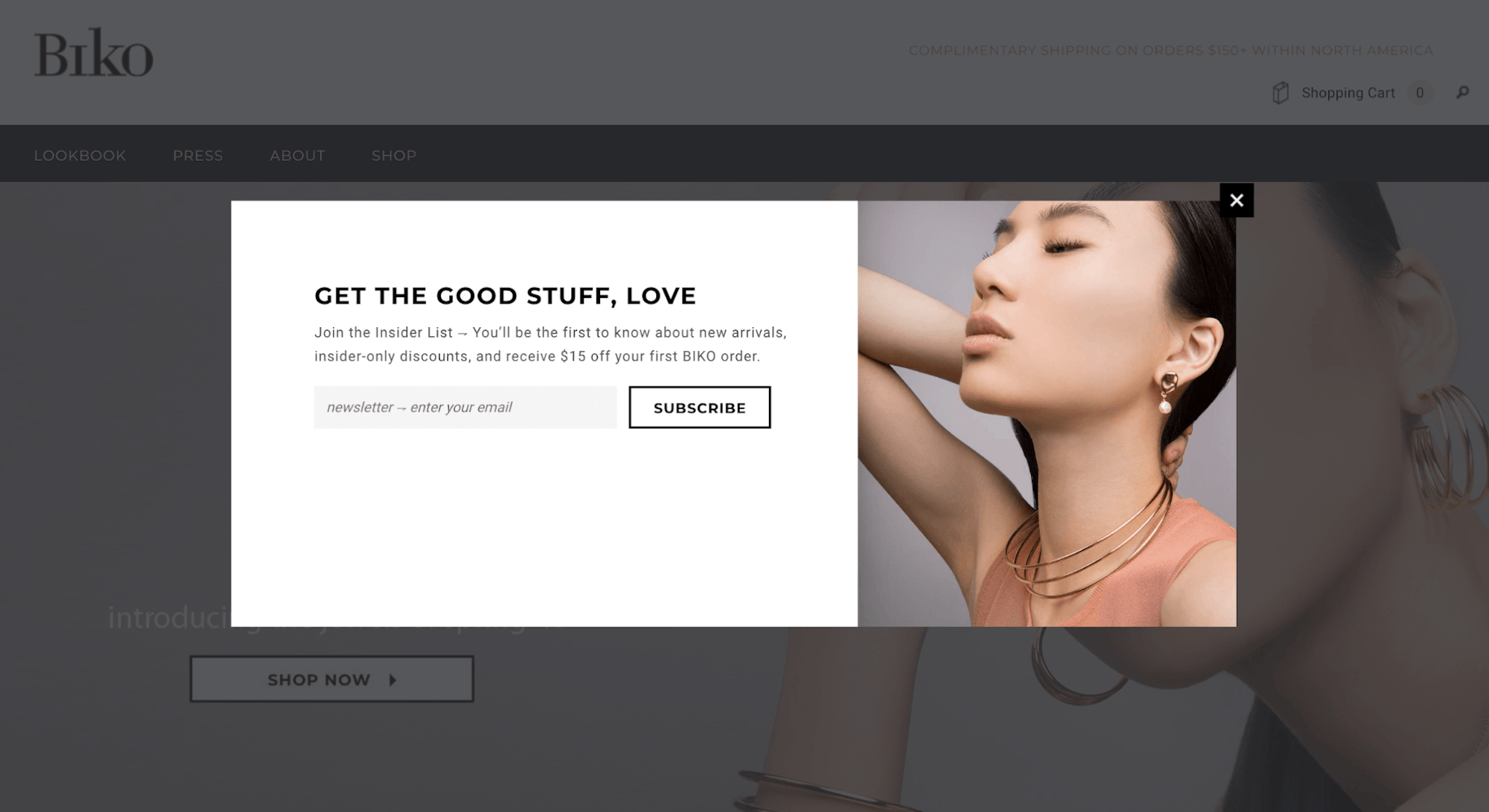
2. Segment Your Email List
Email list segmentation is a way to carve up your subscriber list into groups.
This allows you to send different emails to different groups of people. In other words, you can strategically target subscribers at different stages of the buyer’s journey.
Email list segmentation is incredibly effective.
In fact, the Direct Marketing Association found that 77 percent of email marketing ROI comes from segmented, targeted, and triggered campaigns.
Check our full guide on email list segmentation to get started.
3. Use Email Templates
Writing incredible emails from scratch can take time – especially if you’ve never written an email campaign before.
Instead, get started with some effective email marketing templates.
Summary
You don’t need tons of money to start a successful business.
Thanks to these free marketing channels, it’s possible for anyone with a computer, wifi, and some elbow grease to start an online business.
Here’s a summary of the key takeaways from each marketing channel:
Social Media Marketing
- Choose a few social media platforms so you don’t spread yourself too thin.
- Make sure a large portion of your target audience spends time interacting on these sites.
- Prioritize relationships over sales.
- Be consistent with your social media schedule.
Influencer Marketing
- Create a compelling offer – what’s in it for them?
- Make sure to thoroughly research influencers before you partner with them.
- Stick to micro-influencers, to begin with.
- Get proactive and reach out to many influencers.
- Develop long-term ambassador relationships.
Content Marketing
- Focus on producing and sharing value.
- Entertain your target audience or teach them something.
- Repurpose content for different channels and platforms.
- Invest in the long-term.
Search Engine Optimization
- Research effective keywords that your target audience is already searching for.
- Optimize your website and content for these keywords.
- Continually refresh and update old content to ensure it stays relevant.
Email Marketing
- Create a compelling lead magnet to get people to sign up to your mailing list.
- Segment your email list into groups so you can strategically target people at different stages in the buyer’s journey.
- Start by using effective email templates to save time.
Which marketing channels are you currently using to promote your business? Let us know in the comments below!






